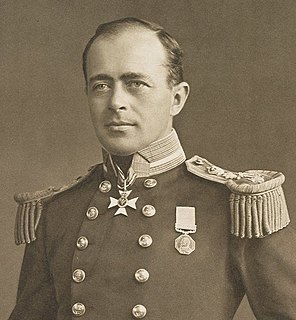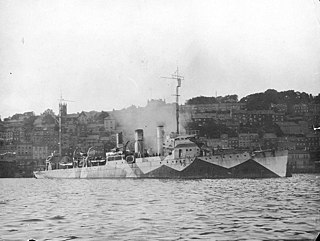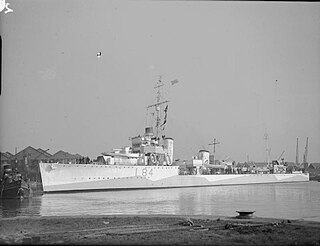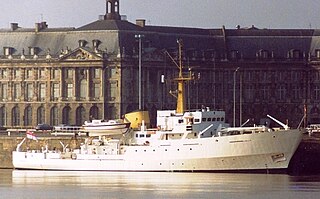Three ships of the Royal Navy have borne the name HMS Scott. The first ship was named after Sir Walter Scott, 1st Baronet. The later ships were named after the Antarctic explorer Robert Falcon Scott: [1]

The Royal Navy (RN) is the United Kingdom's naval warfare force. Although warships were used by the English kings from the early medieval period, the first major maritime engagements were fought in the Hundred Years War against the Kingdom of France. The modern Royal Navy traces its origins to the early 16th century; the oldest of the UK's armed services, it is known as the Senior Service.

Sir Walter Scott, 1st Baronet was a Scottish historical novelist, poet, playwright and historian. Many of his works remain classics of both English-language literature and of Scottish literature. Famous titles include Ivanhoe, Rob Roy, Old Mortality, The Lady of the Lake, Waverley, The Heart of Midlothian and The Bride of Lammermoor.

Captain Robert Falcon Scott, was a British Royal Navy officer and explorer who led two expeditions to the Antarctic regions: the Discovery Expedition of 1901–1904 and the ill-fated Terra Nova Expedition of 1910–1913. On the first expedition, he set a new southern record by marching to latitude 82°S and discovered the Antarctic Plateau, on which the South Pole is located. On the second venture, Scott led a party of five which reached the South Pole on 17 January 1912, less than five weeks after Roald Amundsen's Norwegian expedition. A planned meeting with supporting dog teams from the base camp failed, despite Scott's written instructions, and at a distance of 150 miles from their base camp and 12 miles from the next depot, Scott and his companions died. When Scott and his party's bodies were discovered, they had in their possession the first Antarctic fossils ever discovered. The fossils were determined to be from the Glossopteris tree and proved that Antarctica was once forested and joined to other continents.
- HMS Scott (1917) was an Admiralty type destroyer leader. She was launched in 1917 and sunk in 1918 by a German submarine.
- HMS Scott (J79) was a survey ship launched in 1938. She was used as an escort vessel between 1939 and 1940 and was broken up in 1965.
- HMS Scott (H131) is an ocean survey ship launched in 1996 and currently in service.

HMS Scott was the first of a new destroyer leader class built to be flotilla leaders for the V- and W-class destroyers. She was ordered during the First World War in 1916, and the class would unofficially be named after her. The ship herself was the first to bear the name Scott and was named after Sir Walter Scott, 1st Baronet.

The Admiralty type leader, sometimes known as the Scott class, were a class of eight destroyer leaders designed and built for the Royal Navy towards the end of World War I. They were named after Scottish historical leaders. The function of a leader was to carry the flag staff of a destroyer flotilla, therefore they were enlarged to carry additional crew, offices and signalling equipment, allowing a fifth gun to be carried. These ships were very similar to the Thornycroft type leader, but the latter had broad, slab-sided funnels characteristic of Thornycroft designs, the Admiralty type having two narrow funnels of equal height.

A flotilla leader was a warship late of 19th century and early 20th century navies suitable for commanding a flotilla of destroyers or other small warships, typically a small cruiser or a large destroyer. The flotilla leader provided space, equipment and staff for the flotilla commodore, including a wireless room, senior engineering and gunnery officers, and administrative staff to support the officers. Originally, older light or scout cruisers were often used, but in the early 1900s, the rapidly increasing speed of new destroyer designs meant that such vessels could no longer keep pace with their charges. Accordingly, large destroyer designs were produced for use as leaders.





